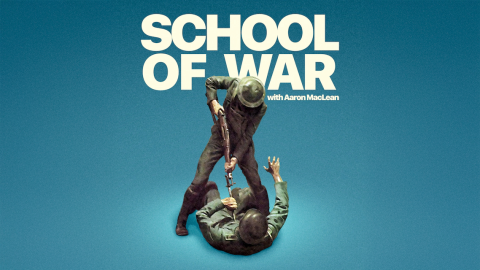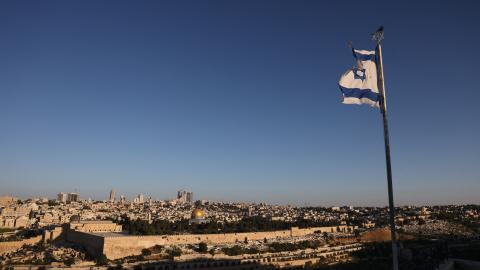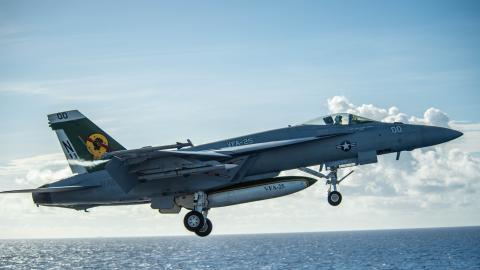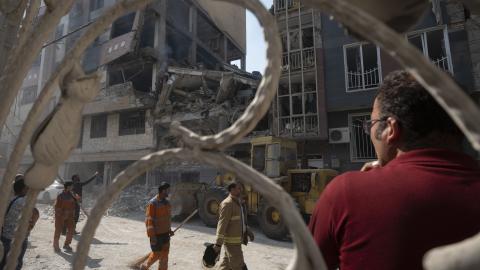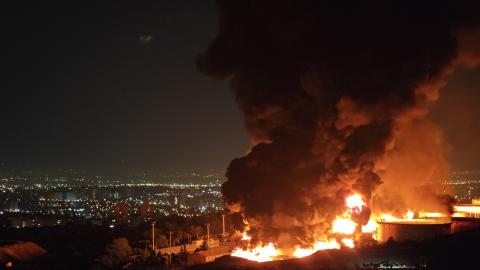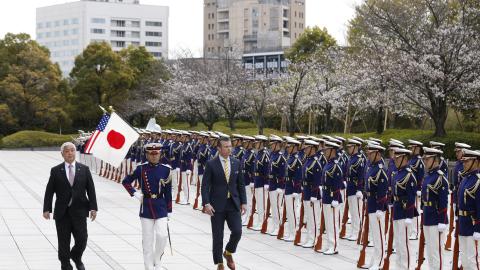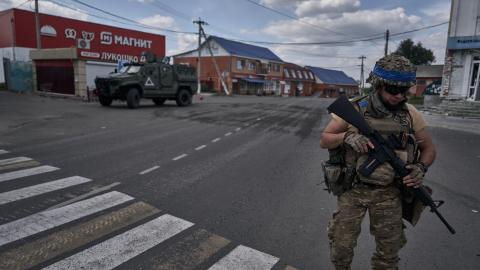Below Senior Fellow Can Kasapoğlu offers a military situation report about the war in Ukraine.
Executive Summary
• The Ukrainian military continues to gain territory and capture Russian troops in its Kursk offensive.
• Ukraine now controls more than 80 villages and towns in Russia and is conducting deep operations to shape the battleground.
• Nonetheless, the situation in eastern Ukraine favors Russia, and the Kremlin’s combat formations have made critical gains near Pokrovsk.
• Russia continues to launch North Korean ballistic missiles and Iranian drones at Kyiv.
1. Ukraine Makes Gains in Kursk Offensive
Ukraine has continued to advance in the Russian oblast of Kursk, and the tactical situation in the area remains fluid and dynamic. The Ukrainian Armed Forces have penetrated up to 25 miles inside Russian territory. Ukraine now controls approximately 80 towns and villages, including the critical rail and energy hub of Sudzha.
Ukrainian forces have established a military administration for the seized Russian territory in Kursk and have reportedly taken roughly 2,000 Russian prisoners of war (POWs). Visual evidence suggests that captured forces include significant elements from pro-Russian Chechen strongman Ramzan Kadyrov’s Akhmat paramilitary.
The number of Russian POWs could rise further. Critical open-source intelligence indicators, including a large amount of abandoned equipment, suggest that Russian personnel suffer from low morale. Reportedly, Ukrainian forces are pushing to capture Rylsk, the outermost point of Russian defenses on the E-38 Highway and a critical node in the Kremlin’s supply chain. To this end, Ukraine struck bridges along the Seym River, making it harder for Russia to send reinforcements to the front lines. Fearful of being cut off from their main lines of defense, Russian servicemen have already begun looting local markets near Glushkovo.
The Ukrainian military’s force generation profile deserves attention. In addition to air assault and mechanized brigades, the Ukrainian General Staff has also dispatched its special units to Kursk. Ukraine’s 130th Separate Reconnaissance Battalion’s Bravo Team, an elite unit of Ukrainian Defense Intelligence, is currently operating near Sudzha in Kursk. The 14th Regiment of the Ukrainian Unmanned Systems Command, which excels at drone warfare operations, is also part of the operation inside Russia.
While reports from Ukrainian and Russian sources differ, it is clear that Ukraine holds the offensive edge. Satellite imagery suggests that Russian forces are building new fortifications across the axes approaching Lgov, Rylsk, and Hlukhiv. Limited visual evidence indicates that Russia has also dug anti-vehicle ditches deeper within Kursk Oblast.
Nonetheless, Ukraine has attained advances at a gradually increasing cost. Last week, the Russian military targeted Ukrainian multiple-launch rocket systems in an effort to disrupt Ukraine’s fire support capabilities. Furthermore, maneuvering Ukrainian heavy armor is now vulnerable to Russian artillery and drone warfare assets, particularly Lancet loitering munitions.
As a result, Ukraine has lost many warfighting vehicles over the last several days, including a United Kingdom–supplied Challenger 2 main battle tank. The Ukrainian 82nd Air Assault Brigade is the primary operator of the Challenger 2 in the Ukrainian Armed Forces’ doctrinal order of battle. This suggests that the 82nd has been involved in the Kursk offensive. Though the loss of one main battle tank hardly jeopardizes Ukraine’s overall offensive, fighting in hostile territory without sufficient organic maneuver short-range air defenses (M-SHORAD) such as the Flakpanzer Gepard is hardly optimal.
2. Battlefield Assessment
Open-source assessments indicate that the Kremlin has pulled a significant share of its reserves from Zaporizhzhia, Crimea, and Kharkiv to block Ukraine’s advances into Russia. Detachments from the Russian 155th Marine Infantry Brigade, a unit credibly accused of committing war crimes in the Ukrainian towns of Bucha and Irpin, have also been deployed to Kursk, likely from the north. The area around Kharkiv remains tense but stable, with little Russian progress. Eastern Ukraine, nonetheless, is still crowded with Russian troops.
Meanwhile, the Russian military continues to terrorize Ukrainian civilians with long-range strikes. On August 18, Moscow launched a mixed strike package, augmented by North Korean KN-23 ballistic missiles and Iranian Shahed drones, against Kyiv. Previous editions of this report have emphasized the dire threat Russia’s use of North Korean ballistic missiles poses. The Russian military also used Iskander tactical ballistic missiles to target Ukrainian Patriot air defense positions in Dnipropetrovsk, though the outcome of these efforts is unknown.
In eastern Ukraine, Russian units continue to press, with a particular focus on Pokrovsk. Visual evidence indicates that the Ukrainian military has been forced to employ cluster munitions to halt enemy advances—even when its personnel are fighting in close proximity to Russian combat formations. The overwhelming operational tempo indicates that the Russian high command has yet to withdraw a meaningful number of troops from Ukraine’s east to address the deteriorating situation at home. Ukrainian news outlets confirm that Russian troops are now less than four miles from the town of Myrnohrad, east of Pokrovsk.
Recent reports suggest that the United States may upgrade Ukraine’s set of F-16 fighter aircraft, enabling the jets to carry sophisticated munitions such as the air-launched AGM-158 Joint Air-to-Surface Standoff Missile (JASSM). The stealth cruise missile, with an effective range of over 300 miles, could significantly improve Kyiv’s long-range strike capabilities. As the Kremlin continues to attack Ukrainian bases hosting critical platforms—just last week, for example, Russia struck in Dnipro, destroying a Ukrainian MiG-29 before a combat sortie—protecting Kyiv’s F-16s will be critical.
Ukraine also continues to launch long-range attacks on Russia’s critical military infrastructure. Last week, Ukrainian forces struck and destroyed two maintenance facilities at Borisoglebsk Air Base, about 150 miles inside Russia, and conducted a long-range aerial assault on an air base in Savasleyka, over 400 miles from Ukraine’s border.



